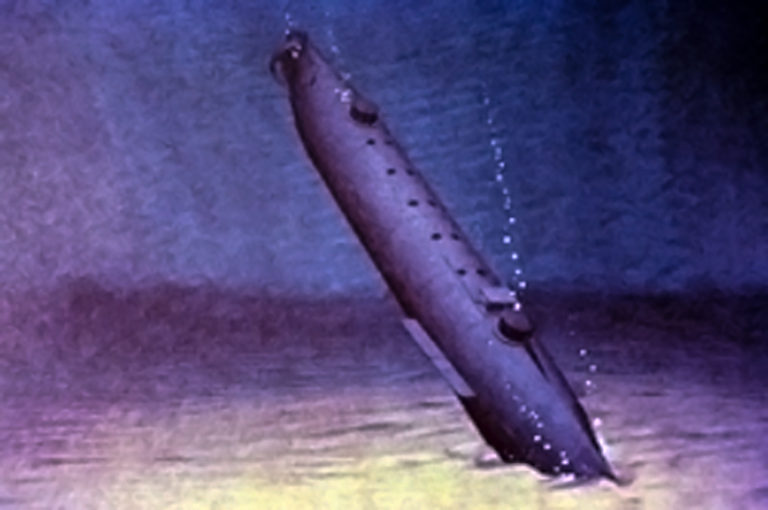

Payne escaped along with two others, but the rest of the crew perished. Payne – accidentally stepping on a control lever which caused Hunley to dive with one hatch still open. More accurately, it sank before the test dive, while running on the sea surface, due to the captain - Confederate Navy Lieutenant John A. However, disaster struck just two weeks later, as the submarine sank during a test dive. In August 1863, following a demonstration in which it successfully attacked a non-military coal flatboat, Hunley was transported by rail to Charleston, South Carolina. A watertight hatch was fitted at each end, although their small size made entering (and escaping) quite difficult. The claustrophobic interior of the hull was just 1.30 m (4 ft 3 in) in height. Measuring almost 12 m (40 ft) in length, the submarine was designed for an eight-man crew seven to turn the hand-cranked propeller, and one to steer. In total, 21 Confederate crewmen died aboard Hunley, in comparison to just five Union soldiers which it killed during its first and only real mission (after having already sunk twice!) However, the ill-fated vessel claimed more of its own crew’s lives than the enemy’s. Potentially the unluckiest boat in history – or the most incompetently run, given the self-inflicted nature of each sinking - it holds a record for the most times for a submarine to sink.ĭesigned by Horace Lawson Hunley, it was built in 1863 - the third year of the American Civil War - and belonged to the Confederacy. In a short career of less than seven months, the submarine H.L. For more information, visit the Hunley website at. The Hunley is currently on display at the center in North Charleston, South Carolina. In 1995, the Hunley was discovered by preservationists off the coast of Charleston the submarine was raised intact in 2000, where it was taken to North Charleston’s Warren Lasch Conservation Center. It took less than five minutes for the Housatonic to sink Dixon signaled back to shore with two blue lights to indicate the mission was successful, and the men on shore lit a fire to guide the ship back to shore, but the Hunley never made it. The submarine approached the ship and detonated a torpedo just below the surface creating, a hole. 17, the sea calmed just enough for the crew to embark on their last mission at approximately 8:45 p.m., the submarine approached and sunk the Housatonic, according to the Hunley website. The vessel disappeared for several weeks before being discovered in the harbor channel with its nose buried in the mud all on board were lost.Īfter weeks of debate, the submarine was passed to Captain George Dixon and a volunteer crew who would spend the next two months preparing the vessel for another mission. 15, Hunley scheduled a demonstration where the ship would dive beneath the CSS Indian Chief and resurface. In this time, Hunley arrived and demanded control of the vessel. 29, 1863, the vessel sunk at the dock while preparing to launch its first attack.įive crew members were killed in the first sinking, and it took weeks to recover the submarine. 12, 1863, to assist with the blockade of the harbor on Aug. The Hunley was then sent to Charleston on Aug. The submarine dove under the vessel and released a torpedo that hit its mark, impressing several high-ranking officials, includingĪdmiral Franklin Buchanan, Mobile’s Naval Commandant, according to the Hunley website. The Hunley was launched in July 1863 for a demonstration in the Mobile River, sinking a coal-hauling barge anchored in the river. The ends of the submarine were equipped with water ballast tanks that could be flooded by valves or pumped dry by hand pumps many features of the submarine would become standard in later versions. The submarine was powered by a hand crank which took seven men to handle and an eighth man to steer the vessel. The submarine was built by Park and Lyons in Mobile, Alabama, and was constructed from rolled iron boilerplates with custom cast iron fittings. In 1863, Horace Lawson Hunley financially backed the construction of the Hunley for the Confederacy.

Hunley sunk the USS Housatonic, a 16-gun, 1,240-ton sloop-of-war, while it was blockading the entrance to Charleston Harbor the Hunley became the first submarine to sink an enemy warship during wartime, according to the Naval History and Heritage Command website. 17, 1864, the Confederate submarine, the H.L.


 0 kommentar(er)
0 kommentar(er)
